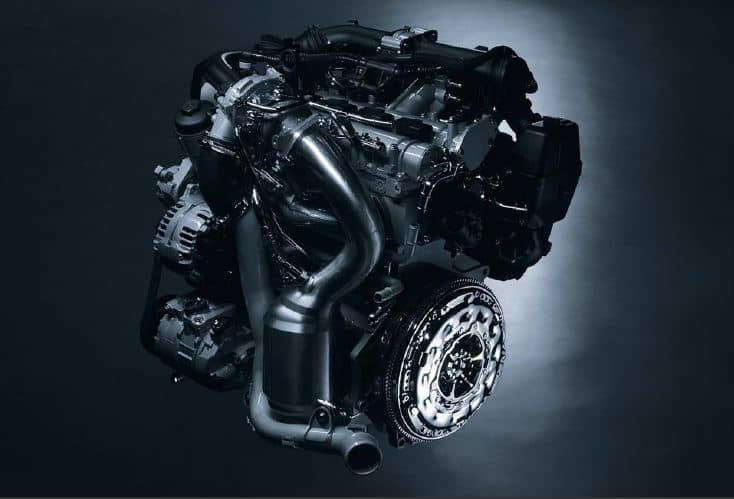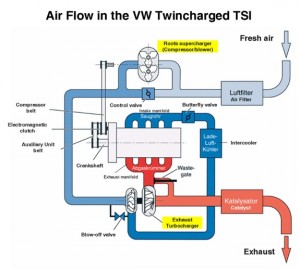Seeing Double – A Great Tandem!
One of the first mainstream companies that pioneered and introduced Twincharging is the Volkswagen, although Lantia also pioneered a Twincharger setup around the 80’s as seen in the Delta S4 rally car.
What is Twincharging and how is it beneficial? Does it have any downsides?
Twincharging is where a supercharger and turbo are both fitted and plumbed into an engine.
The eminence of supercharges stands on the fact that they yield linear power gains in relevance to the engine’s RPM, which imitates that of an engine with large capacity. Superchargers may become exhausted and run out of steam at high RPM levels and this is where a turbocharger emerges on its own.
A turbocharger takes some time to get going since it requires a good flow of exhaust gases, and once it does, it can generate large power gains ranging from mid range up to the maximum, high end of the RPM range.
You get the best of both worlds quite literally when you have both fitted in your car. You acquire lots of down power and extra boost in high levels of RPM. This is done for reasons such as the need for loads of boost and minimal air flow in applications like in diesel and small petrol engines where you need forced induction.
Turbo won’t flow at 30 pounds/min at 40 psi so you would have to use two to make it up to maintain efficient operation. The smaller of the two will give loads of boost pressure and the bigger will have to flow the total volume of air, so you must put the larger unit nearest to your engine and the smaller compressor would be fine near the air intake. These two stages enables a substantial increase in boost from relatively low components such that 10 psi Turbo plus a 10 psi supercharger equates to a boost of incredibly just under 30 psi.
Twincharging applications mostly follow a common route. There is the Asynchronous or Series, in which case both simultaneously work together and is the easiest to set up. There is the Inline or Parallel setup where the supercharger yields boost at low RPM and then the turbo takes over at a certain point towards the higher RPM range. An electronic relay or diverter separates the supercharger and turbocharger, this makes sense so that they won’t be flowing through one another.
The trick to great performance is to get the Twincharger installed into your engine in a way that will get them working effectively. Your options can be restricted if the engine bay space is limited and can be fixed by reallocating the battery to free up sufficient room. A larger intercooler is also necessary because there is quite an amount of heat build up. Some utilize a twin intercooler in each stage while others stick with the intercooler that has a large capacity. To further decrease intake temperatures, these can be sprayed with nitrous or water. It would be worth acquiring a Roots supercharger, even an old one where you can find from breakers yards at a cheap cost. A screw supercharger would work as well but there could be some issues you could encounter which is not present in a roots setup.
Once you have plumbed in the second compressor, setting the mapping and air fuel ratios accurately because failure to get this right can lead to detonation or over fueling of your engine. If used in compound charging, throttle body placement has to go in the middle of the turbo and supercharger, or the back pressure exerted when the throttle is closed at high revs can destroy your supercharger. Twinchargers are best setup on a rolling road with reliable diagnostic equipment, and most twincharging kits provide the mechanical components. Then an aftermarket ECU is required by most cars to allow coping with extra mapping needs to achieve the best results.


